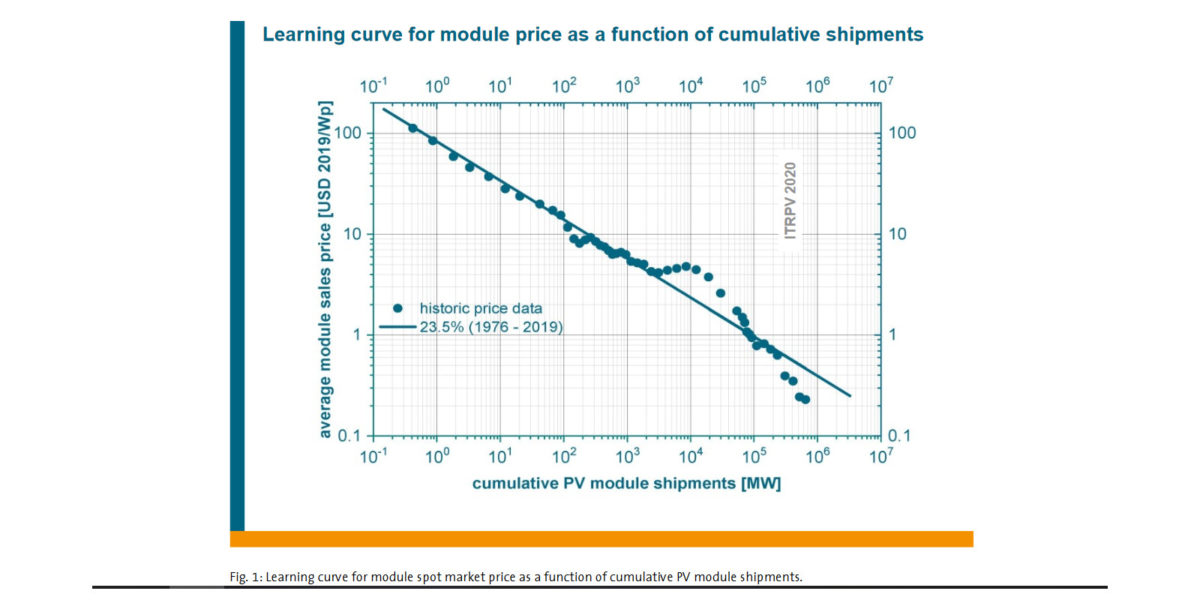From pv magazine Germany.
Germany’s International Technology Roadmap for Photovoltaic (ITRPV), which aims to track solar power price falls and rising conversion efficiencies, has undergone its 11th update.
The report, produced by engineering association the Verbandes Deutsches Maschinenbau Anlage (VDMA), states more than 650 GW of solar module generation capacity was delivered last year. The learning rate of photovoltaics – the speed at which price declines accelerate with wider deployment of the technology – reached 23.5% in 2019, according to the VDMA.
The authors of the latest ITRPV document predict the learning rate for PV will continue at a similar speed in the years ahead, leading to further price declines, thanks to measures such as the use of better, larger solar wafers; optimization of front and rear cells; better module lay-outs; bifacial cell deployment; new cell types; and improved module technology.
The latest ITRPV estimates there is more than 200 GW of solar module production capacity worldwide and the report’s authors expect the figure to continue rising.
The roadmap update estimates module costs fell 10% last year – for both mono and multicrystalline products – and cell costs retreated 20%. The average monocrystalline solar module price fell from $0.39 per Watt-peak in 2018 to $0.24 this year, according to the ITRPV update. Multicrystalline products fell from $0.31 to $0.21 over the same period, according to the VDMA.
Popular content
The study forecasts monocrystalline modules will supply 75% of the global market this year, with multi products making up 20%, falling to just 5% by 2030.
The report’s authors predict the standard 156.75 by 156.75mm wafer format will be replaced at some point by 166mm² ‘M6’ and 210mm² ‘M12’ products.
The rising popularity of more efficient Perc cell and half-cell products continued last year although larger wafers have led to bigger modules, making performance comparisons potentially misleading, according to the VDMA. The authors of the latest iteration of the roadmap have suggested dividing module performance by size of product, in square meters, to assess performance.
Using that formula, monocrystalline, p-type Perc modules generate an average 203 W/m² this year. The roadmap’s authors estimate that performance will rise to 225 W/m² by 2030. For n-type equivalents, a rise in square-meter output from 208 W to 230 W is anticipated. Heterojunction products currently offer an average 210 W/m², according to the roadmap, and will offer almost 240 W in ten years’ time.
This content is protected by copyright and may not be reused. If you want to cooperate with us and would like to reuse some of our content, please contact: editors@pv-magazine.com.




With solar costs dropping lower than ever before, and renewable energy generation in high demand, a solar carport is a clever alternative to rooftop or ground-mounted solar panel installations. In fact, according to